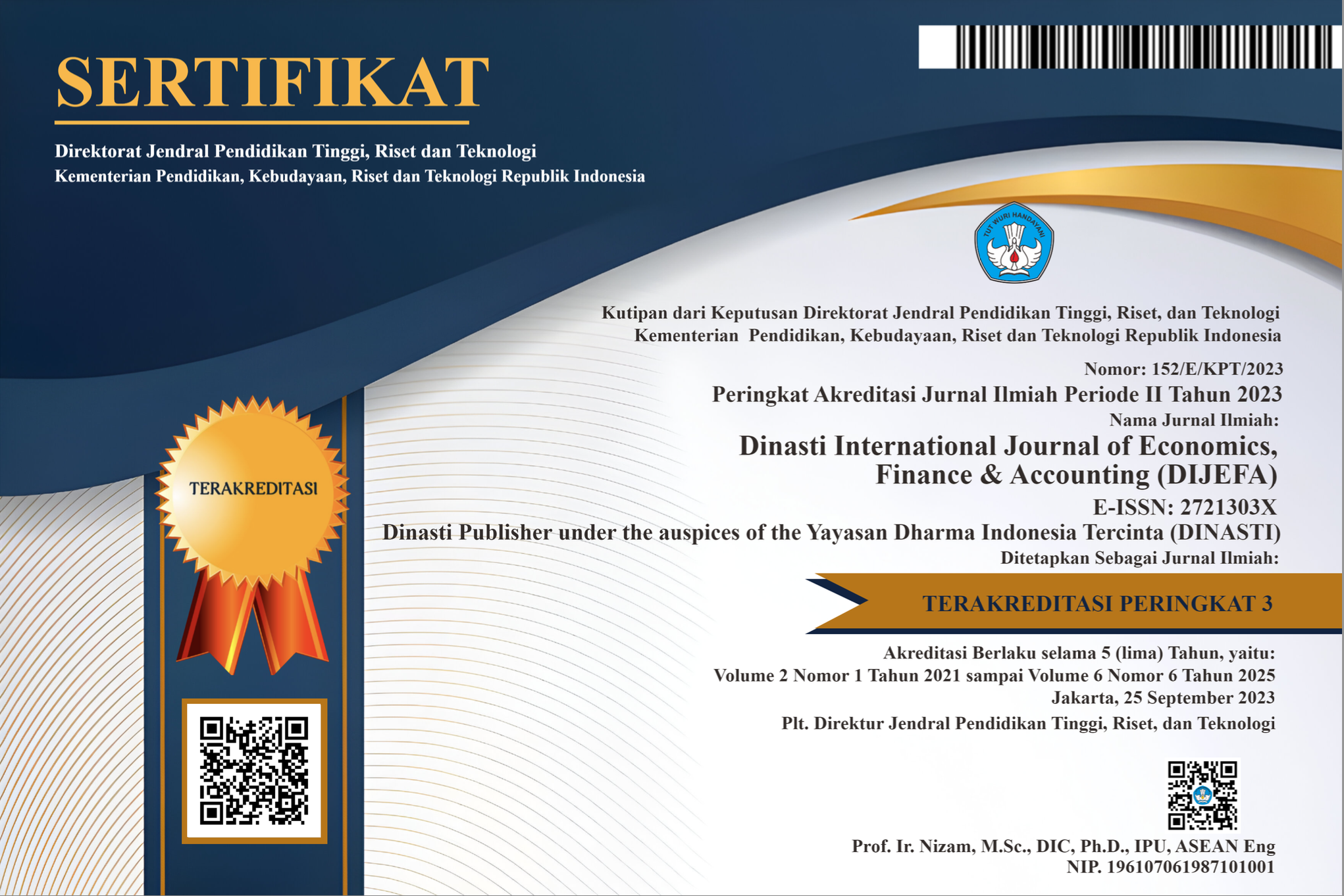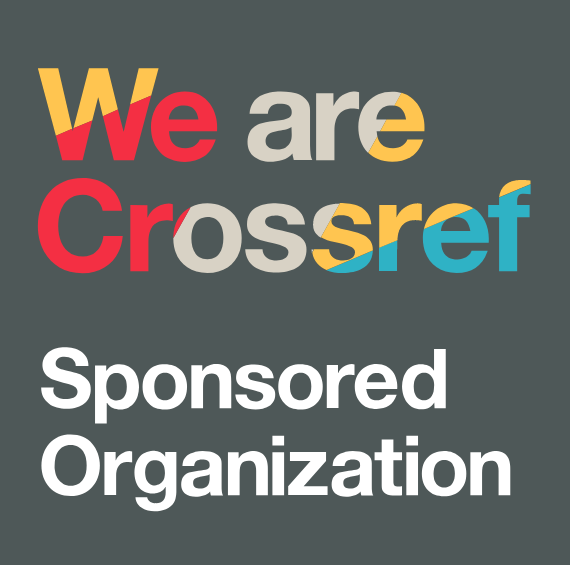Evaluasi Peran Audit Internal Sebagai Pencegah dan Pendeteksi Fraud Pada PT XYZ
DOI:
https://doi.org/10.38035/dijefa.v6i1.4045Keywords:
Internal Audit, Fraud, Internal Control, COSOAbstract
This study aims to evaluate the role of internal audit as a fraud prevention and detector at PT XYZ, using internal control framework based on the COSO 2013 Internal Control – Integrated Framework. This study is a case study with an evaluation type, with data collection through in-depth interviews and focus group discussions with five key informants involved in the company's operations and finances. The results of the study indicate that although PT XYZ has strengthened its internal control system by recruiting internal auditors, there are weaknesses in the transaction verification procedures that allow fraud to occur. The analysis also identified the need for improvements in control activities, especially related to ongoing investigations and supervision. Based on these results, this study recommends designing a more effective internal control system by strengthening transaction document checking procedures, integrating technology-based monitoring systems, and training for internal auditors to increase effectiveness in detecting and preventing fraud. These findings are expected to be a reference for strengthening internal audit practices in similar organizations, especially in the small and medium business sector.
References
Albrecht, C. C., Albrecht, W. S., & Albrecht, C. O. (2021). The role of internal communication in fraud prevention. Journal of Forensic Accounting, 29(1), 45-60.
Arens, et al. (2020). Auditing and Assurance Services, Seventeenth Edition. Harlow: Pearson Education Limited.
Association of Certified Fraud Examiners. (2022). Occupational fraud 2022: A report to the nations. Retrieved from: https://acfepublic.s3.us-west-2.amazonaws.com/2022%2BReport%2Bto%2Bthe%2BNations.pdf. Diakses pada 20 Oktober 2024.
Beasley, M. S., Branson, B. C., & Hancock, B. J. (2019). The importance of monitoring internal controls and detecting fraud. Journal of Accounting and Auditing, 34(2), 121-134.
Committee of Sponsoring Organizations of the Treadway Commission (COSO). (2013). Internal control – Integrated framework: Executive summary. Committee of Sponsoring Organizations of the Treadway Commission.
Creswell, J. W. (2012). Research design: Pendekatan kualitatif, kuantitatif, dan mixed (Edisi ke-4). Pustaka Pelajar.
Fachruddin, M., & Rahajeng, D. K. (2021). Analisis Peran Audit Internal dalam Pencegahan Fraud (Studi kasus pada Universitas XYZ di Yogyakarta). ABIS: Accounting and Business Information Systems Journal, 10(2).
Handoyo, B. R. M., & Bayunitri, B. I. (2021). The influence of internal audit and internal control toward fraud prevention. International Journal of Financial, Accounting, and Management, 3(1), 45-64.
Hikmah, A. N., & Wondabio, L. S. (2023). Evaluasi Peranan Audit Internal pada Penerapan Strategi Anti Fraud. Owner: Riset dan Jurnal Akuntansi, 7(4), 3285-3294.
Himawan, A. S., & Siswantoro, D. (2023). Anti-Fraud Strategy Evaluation in Bank XYZ. Jurnal Ilmiah Wahana Pendidikan, 9(6), 25-34.
KPMG. (2023). Pedoman Umum Governansi Sektor Publik Indonesia. Komite Nasional Kebijakan Governansi.
Langenmayr, T., Seidl, D. N., & Jarzabkowski, P. (2023). Participatory Strategy Making as Dual Sensemaking Process. In Academy of Management Proceedings (Vol. 2023, No. 1, p. 14788). Briarcliff Manor, NY 10510: Academy of Management.
Maliawan, I. B. D., Edy Sujana, S. E., Diatmika, I. P. G., AK, S., & Si, M. (2017). Pengaruh Audit Internal Dan Efektivitas Pengendalian Intern Terhadap Pencegahan Kecurangan (Fraud) (Studi Empiris Pada Bank Mandiri Kantor Cabang Area Denpasar). JIMAT (Jurnal Ilmiah Mahasiswa Akuntansi) Undiksha, 8(2).
Pandey, S. C., & Patnaik, S. (2019). Establishing reliability and validity in qualitative inquiry: A critical examination. Jharkhand journal of development and management studies, 12(1), 5743-5753.
Petra?cu, D., & Tieanu, A. (2014). The role of internal audit in fraud prevention and detection. Procedia Economics and Finance, 16, 489-497.
PwC. (2022). Occupational fraud 2023: A report to the nations (pp. 1–106). Association of Certified Fraud Examiners.
Rittenberg, L. E., Johnstone, K. M., & Gramling, A. A. (2019). Auditing: A risk-based approach to conducting a quality audit (11th ed.). Cengage Learning.
Singleton, T. W., & Singleton, A. J. (2010). Fraud auditing and forensic accounting (Vol. 11). John Wiley & Sons.
Widoretno, A. A., & Tobing, A. N. (2022). The Implementation of Anti-Fraud Strategy to Achieve Good Corporate Governance. Nusantara Science and Technology Proceedings, 18-27.
Zarlis, D. (2018). Pengaruh Pengendalian Internal Terhadap Pencegahan Fraud di Rumah Sakit (Studi empiris pada Rumah Sakit swasta di Jabodetabek). Transparansi: Jurnal Ilmiah Ilmu Administrasi, 1(2), 206-217.
Downloads
Published
How to Cite
Issue
Section
License
Copyright (c) 2025 Heidi Ruth Corry Sitorus, Fitriany Fitriany

This work is licensed under a Creative Commons Attribution 4.0 International License.
Authors who publish their manuscripts in this journal agree to the following conditions:
- The copyright on each article belongs to the author(s).
- The author acknowledges that the Dinasti International Journal of Economics, Finance & Accounting (DIJEFA) has the right to be the first to publish with a Creative Commons Attribution 4.0 International license (Attribution 4.0 International (CC BY 4.0).
- Authors can submit articles separately, arrange for the non-exclusive distribution of manuscripts that have been published in this journal into other versions (e.g., sent to the author's institutional repository, publication into books, etc.), by acknowledging that the manuscript has been published for the first time in the Dinasti International Journal of Economics, Finance & Accounting (DIJEFA).


























































